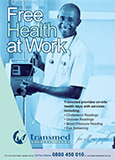Hearing loss
We have all experienced a degree of temporary hearing loss. This may have occurred as a result of an ear infection, wax impaction or travelling in an aeroplane. Permanent hearing loss, however, is a more worrying concern and may occur due to a condition or due to the ageing process. All persons over the age of 60 should have their hearing tested.
What are the causes of hearing loss?
Conductive hearing loss
This is caused by conditions that impair the movement of sound waves. These include infections, congenital malformations, ear canal conditions and tumours.
Sensorineural hearing loss
This is due to poor conversion of sound waves into a nerve impulse that should be sent to the brain. These may be caused by chronic conditions, medication, noise exposure and the ageing process (presbycusis).
Mixed hearing loss
This is a combination of conductive and sensironeural hearing loss.
What is presbycusis?
Presbycusis is sensorineural hearing loss that is associated with ageing. Multiple factors influence the rate at which hearing loss occurs with this condition, including a lifetime of noise exposure, genetics, medication and infections. Hearing loss typically appears during your sixth decade of life and usually affects both ears. Common complaints associated with presbycusis include the inability to hear or understand speech in a crowded or noisy environment, difficulty understanding consonants and the inability to hear high-pitched voices or noises.
What to do if your hearing seems impaired
Hearing loss with ageing can have a great impact on quality of life, causing low self-esteem, isolation, depression and may be a factor in dementia. Screening for hearing loss is therefore recommended for all persons over the age of 60. You should schedule an appointment with your doctor or family physician, who will do an examination and refer you to an audiologist for hearing tests.
Degree of hearing loss and what can be done to treat it
Degree of hearing loss refers to the severity of the loss. It is sometimes incorrectly referred to as a percentage. There are five broad categories:
|
Hearing aids serve to amplify sound and improve the user's ability to understand speech, even in noisy environments, but do not provide normal hearing. Hearing aids mainly benefit moderate to severe hearing loss.
The decision to use a hearing aid is determined by the cause of the hearing loss, results of audiological testing and motivational factors. These issues will be explained to you by the audiologist.
 TransmedBanner4.jpg)

